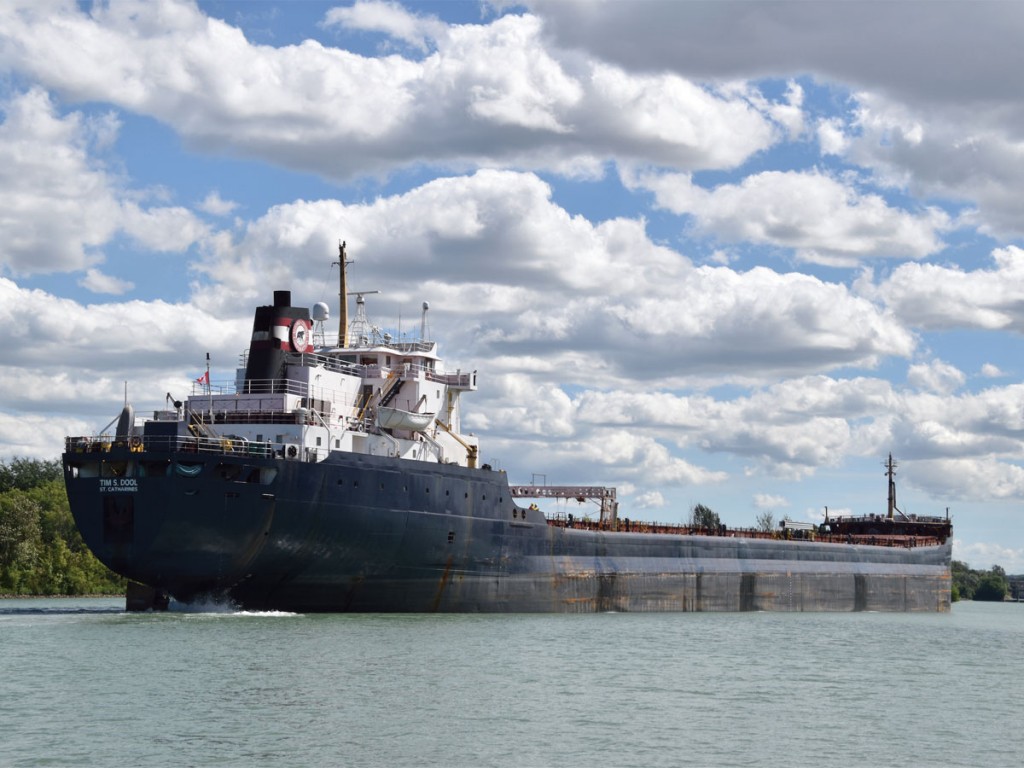The St. Lawrence Seaway, which links North America’s industrial heartland to the Atlantic Ocean, has not failed to be impacted by the ongoing global pandemic. Current Seaway cargo flows through Canadian and U.S. Great Lakes ports served by the waterway’s locks are experiencing a downward pattern in the high single digits, but sharp gains in grain shipments and a solid trend in wind-related project cargo are demonstrating the system’s resiliency and vital trade role.
After handling 41 million metric tons in 2018, throughput dropped by 6.4% in 2019 to 38.3 million tons. In the commercial navigation period between April 1 and September 1, overall shipments totaled 23.2 million tons – representing an 8% decrease.

However, Canadian grain shipments continued to show impressive growth, topping 6.2 million tons in the April 1 to end September commercial navigation period. This represented a 20% increase from a year earlier. U.S. grain exports via the Seaway over the same period exceeded one million tons, or a 4% spike from a year earlier.
“U.S. grain shipments are increasing with the new Midwest soybean harvest being shipped to Europe and North Africa,” remarked Bruce Burrows, President and CEO of the Ottawa-based Chamber of Marine Commerce. “We expect that will continue through the remainder of the shipping season.”
Andrea Gardella, a senior economist with Canada’s Export Development Corporation (EDC), underlines: “We have seen global demand skyrocket with earlier lockdowns causing some challenges in accessing wheat-made products, especially flour, and that has led to significant food insecurity and a re-building of stocks in Europe and Asia.”
While the grain rush has helped lift cargo totals, Great Lakes-Seaway shipping also reported decreases in commodities related to steel production, and the energy and construction sectors. Iron ore was down 20.6% at 4.2 million tons, dry bulk down 12.6% at 6.5 million tons, and liquid bulk down by 27.4%. General cargo, which includes project cargo, has held pretty steady with a moderate drop of 2.8%.
“In a year of many ups and downs, we’re pleased to see grain exports perform remarkably well,” Terence Bowles, President and CEO of The St. Lawrence Seaway Management Corporation, said in October. “The new Prairie wheat and canola crops have been arriving by rail over the past few weeks at the Port of Thunder Bay and the Ontario soybean harvest is now underway. We anticipate strong grain shipments will continue for the remainder of the year.”
Wind Energy Boosts Totals
This view is echoed by Craig Middlebrook, deputy administrator of the Washington-based Saint Lawrence Seaway Development Corporation, who adds that “wind energy shipments are on track to remain strong enough through the end of the navigation season.”
The Port of Thunder Bay reported that grain shipments up to the end of September totaled 5.97 million tons, an increase of 23% over the same period in 2019.
“Grain shipments at the port have been up every month this season to meet world demand for bread and pasta. All of that grain was from last year’s Prairie crops,” said Tim Heney, president and CEO of Thunder Bay Port Authority. “We now have more than 500,000 metric tons from the new harvest in storage waiting to get shipped out on vessels. Rail car unloads at the port over the last weeks continue to be significantly up compared to 2019. We have a busy fall ahead of us.”
This fall has also given Hamilton, Canada’s biggest Great Lakes port, reasons to smile. In the first nine months of this year, grain, fertilizer, salt, coke and gypsum shipments were up significantly, although the total cargo numbers were down 13% from 2019.
Ian Hamilton, president and CEO of the Hamilton-Oshawa Port Authority, remains bullish about the future, declaring: “The integrity of our supply chains has been maintained and at this moment there’s more than $21 million worth of construction projects on the go at the Port of Hamilton. That’s the most we have ever had going on at one time.”
Wind Turbines and Wheat Big at US Port
Among U.S. ports, the Port of Monroe in Michigan has been benefitting from the largest project in its history this season, handling 14 vessels delivering a total of 560 wind turbine segments from Becancour, Quebec for General Electric’s wind energy efforts in the state. The project has helped offset the pandemic-related scarcity of cargoes at the beginning of the season.
The Port of Toledo has lagged behind 2019 totals, but it has welcomed ocean vessels importing and exporting a diverse array of cargo from furnace pieces to liquid fertilizer.
The largest U.S. port on the Great Lakes, Duluth-Superior, has posted sharp declines in coal and iron ore tonnage, but wheat and wind turbine shipments have increased substantially.
“If this pandemic-plagued shipping season was a prospector’s pan, there’d be a lot of black sand and only a few golden nuggets,” said Deb DeLuca, executive director of the Duluth Seaway Port Authority. “But even a few golden nuggets are cause for excitement, and we’re certainly pleased to see strong grain numbers and potentially record-setting success with wind cargoes.”




